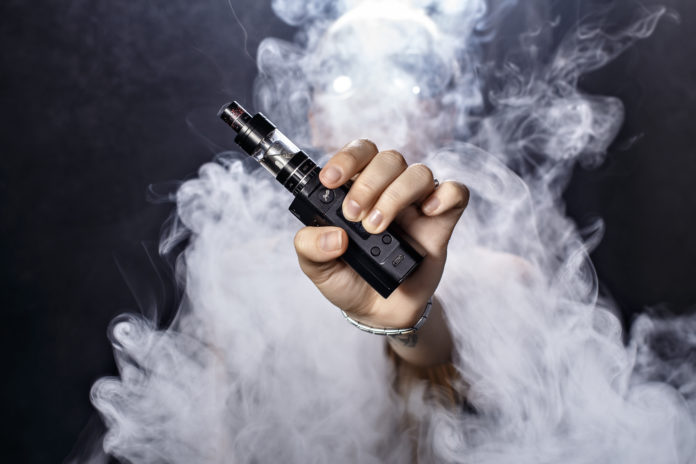“Popcorn lung” sounds like something innocuous. But the reality of it is quite different and alarming. For those who haven’t already heard of the term, “popcorn lung” is the popular name for a severe respiratory illness known as bronchiolitis obliterans (BO).
BO is a lung disease that permanently scars and restricts the flow of air through the bronchioles. Some symptoms of BO include:
- Coughing
- Wheezing
- Shortness of breath
- Weight loss
- Tiredness
The term first gained notoriety for its connection to the dangers of microwavable popcorn. Eight workers at the Gilster-Mary Lee popcorn plant in Joplin, Missouri were found to have contracted a mysterious lung ailment.
Federal regulators from the National Institute for Occupational Safety and Health launched an investigation into the working conditions of the plant. The investigators determined that those workers who had been most exposed to the chemical diacetyl, a chemical used to give popcorn bags their buttery flavor, were the ones most likely to contract BO.
After the researchers delivered their findings recommending that worker’s exposure to diacetyl be limited, the phrase “popcorn lung” was born. Now, however, popcorn lung is being linked to something else, vaping.
A Fog of Uncertainty
A research team from Harvard first established the connection between vaping and popcorn lung. Their conclusions were that diacetyl, the chemical responsible for causing popcorn lung was found in over 75% of all vape juice flavors, especially the sweet and fruity variety.
Diacetyl and its counterpart 2,3-pentanedione are common food additives. Its ingestion remains safe. But when heated and inhaled, as occurs when opening a microwaved bag of popcorn, long-term exposure can result in BO.
Heating e-liquids and inhaling the resulting vapor is the essence of vaping. The best e juices are diacetyl-free. On the other hand, the presence of diacetyl and other similar additives like acetoin in many popular varieties of vape juice caused a great deal of concern.
The Harvard findings created a new front between pro and anti-vaping forces. Anti-vaping advocates heralded the study as more evidence that vaping is just as perilous as cigarette smoking. Pro-vaping proponents took a different route.
They pointed out that cigarette smoke contains even more diacetyl than both e-liquids and other food flavorings. Only, some of the pushback from the pro-vaping side rang hollow.
Saying that other products, like cigarettes, contain even more diacetyl does not change the fact that your product, e-juice, also contains the same chemical. And, funnily enough, while cigarette smoke does contain diacetyl, it has not been shown to cause something like popcorn lung in smokers.
The workers in the Gilster-Mary Lee factory, some of whom were regular smokers, were found only to have contracted BO because of their exposure to the diacetyl vapor and not because they smoked.
Immediate Response
Following the media exposure, and multi-million dollar lawsuits, many microwave popcorn manufacturers, acted immediately to remove diacetyl from their products. Many vape juice producers followed suit when the Harvard published their study.
But, later examinations by researchers found that many e-liquid producers replaced diacetyl with the chemically similar 2,3-pentanedione. This chemical, after increased exposure through inhalation, can also cause a condition similar to “popcorn lung.”
The Harvard study only revealed the presence of diacetyl in e-liquids. It did not conclusively prove that the aerosol inhaled by vapers would lead to BO. And, up until now, there have been no reported cases of vapers contracting BO because of inhaling the diacetyl-laced vapor.
When confronted with the fact that cigarettes contain higher concentrations of diacetyl, one of the Harvard researchers conceded that “e-cigs are safer than cigarettes, no question.” He did add the important caveat, “but ‘safer’ does not mean ‘safe’.”
“Safer does not mean safe” is something pro-vaping advocates have also been saying as of late. The pro-vaping argument has become more nuanced over the years. In the past, the pro-vaping side was perhaps too militant in defending e-cigarettes, suggesting that they were 100% risk-free.
They have taken their cues from reputable and distinguished institutions like the Royal College of Physicians and Public Health England, who have not focused on the absolute safety of e-cigarettes.
Instead, they have argued for the safety of e-cigarettes when compared to the dangers inherent to cigarette smoking. When taking both into comparison, PHE famously found e-cigarettes to be 95% safer than cigarettes. So now, arguments for vaping have been modified from “completely safe” to “safer than.”
Vaping Lung?
What do we take away from all this? Does vaping cause popcorn lung? No one knows for sure.
It seems every week brings new data and studies both for and against vaping.
As mentioned above, the Harvard study did not answer the question of whether vaping e-liquids with diacetyl or 2,3-pentanedione causes BO. It only detected the presence of these chemicals in popular vape flavors.
And given the relative newness of the vaping phenomenon, it might take a few years before any real evidence emerges. But, even then, other factors could muddy the waters.
A vaper’s past smoking history (if they have one) could confound a diagnosis of BO. BO has similar symptoms to known smoking-related diseases like COPD (chronic obstructive pulmonary disease) and emphysema. So it would be difficult to differentiate between the disorders and what their causes were.
But given all that we know about the dangers of inhaling diacetyl, it would behoove the vaping industry to make some changes. The fact that many popcorn manufacturers felt motivated enough to remove it from their products should guide vape juice producers.
It only makes sense that vapers, as well as premium vape juice manufacturers, find ways to phase diacetyl out of their products. Not only are they protecting the health and welfare of their customers, but the production of diacetyl-free e-juices might improve sales and give them an increased market share.
If the vaping industry is proud to distinguish themselves from the tobacco industry, who knowingly peddled poison to their unsuspecting consumers, they should also take steps to not follow in the tobacco industry’s footsteps by not knowingly selling a product they and everyone else knows to be harmful.
About the Author: Phyllis Baker is the health blogger. She manages public relations for the quitting smoking community. Currently, she writes about drugs rehab and addiction treatment.










